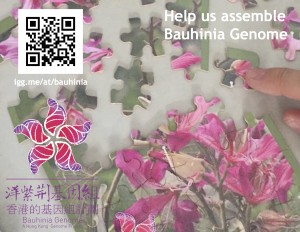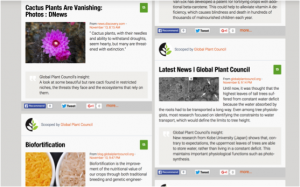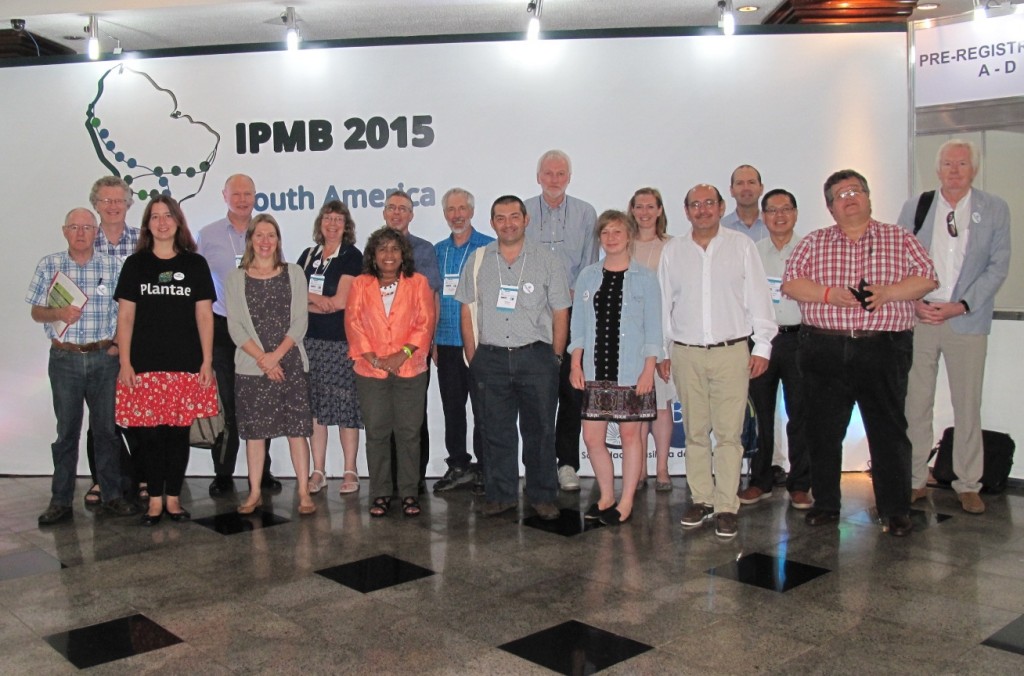Throughout my PhD, I often found myself explaining why plants are fascinating, justifying why I was devoting four years of my life to researching the minute details of their biology.
A few weeks ago, I thought I’d ask the #plantsci community on Twitter what makes them love plants. The response was phenomenal, so I thought I’d share it here as a fun way to transition to 2017!
(This is just a handful of the huge number of comments. To read them all, click here.)
Hey #plantsci, I need your help! What makes you love plants? What’s your comeback to “plants are boring”? Thanks! Plz RT! @PlantTeaching 😉
— Sarah Jose (@JoseSci) November 9, 2016
Many of us are amazed by the fact that they can fend for themselves, rather than running away from harsh conditions or predators:
@JoseSci @PlantTeaching Plants have to deal with many of the same struggles as animals – and they can’t even run away. — Alice Foxall (@alicefoxall) November 13, 2016
@JoseSci @PlantTeaching They’re incredibly resilient and adaptive all without having a nervous system or being able to move!
— Silvia Caldararu (@SCaldararu) November 10, 2016
@JoseSci @DJPMoore Plants survive and thrive in places most humans would never dare even to visit. — Tom Buckley (@TomBuckleyLab) November 10, 2016
@JoseSci forever plastic and survive in the situation wherever they lay their roots. Not denying that’s cool!
— Kelly (@kaatkins7) November 10, 2016
Don’t worry though, because plants can fight back:
@JoseSci @PlantTeaching my tree was attacked by aphids. It released a sweet liquid that attracted ants, chasing away the aphids! — Allen Greeley (@taku2473allen) November 9, 2016
They can alter their environments in really interesting ways too:
@JoseSci @SCIHorticulture @PlantTeaching exudates – active modification of rhizosphere to block toxins entering roots and mobilise nutrients
— Mark Nason (@Cornwall_SciEnv) November 9, 2016
A lot of people are interested in plant reproduction:
@JoseSci @PlantTeaching #Plant sex lives (reproductive life cycles) are so much more complex than ours. Animal life cycles are boring. — Eve Emshwiller (@EveEmshwiller) November 10, 2016
@JoseSci @Botanical_ @PlantTeaching look at all of those reproductive strategies. Plants are truly amazing!
— The Morris Lab @MTSU (@themorrislab) November 9, 2016
Some species can survive for millennia:
@JoseSci @PlantTeaching even relatively short lived yes love longer than humans… some trees count in centuries — Dave Moore (@DJPMoore) November 9, 2016
@JoseSci @PlantTeaching Try cutting one of your appendages off and see if it regrowth like a plant can.
— Edith L. Hardcastle (@elhardcast) November 9, 2016
@JoseSci @PlantTeaching some genetic individuals (plants) might live forever — Dave Moore (@DJPMoore) November 9, 2016
Much of the rest of the ecosystem relies on them…
@JoseSci @DJPMoore Plants can live without us, but we can’t live without them. Animals are just parasites on a biosphere fueled by plants.
— Tom Buckley (@TomBuckleyLab) November 10, 2016
@JoseSci @PlantTeaching if animals died out many plants would survive…if plants died out most animals would die also — Dave Moore (@DJPMoore) November 9, 2016
… and of course, they give us much of what we need to survive…
@JoseSci @PlantTeaching bread, beer, wine, oxygen…
— Matthew Gilliham (@IonPlants) November 10, 2016
@MMLewandowski52 @PlantTeaching @JoseSci literally food out of (thin) air…especially in aeroponic systems — Krishna Udaiwal (@Plant_Learner) November 10, 2016
@JoseSci @PlantTeaching Plants do everything we do + capture sun E + synthesize virtually all useful medicines and poisons + are beautiful
— Paul Twigg (@UNKBiol106) November 9, 2016
@JoseSci @PlantTeaching Kinda hard to breathe without ’em, for one! — Dan Lin (@DLinYZ) November 10, 2016
@JoseSci @PlantTeaching Well, they make colours, flavours, fragrances, drugs…
— Anne Osbourn (@AnneOsbourn1) November 10, 2016
@JoseSci @PlantTeaching we depend on plants for just about everything, plants are _not_ boring! — McPanos (@panagopucakes) November 18, 2016
We need to highlight how amazing plants are, to counteract “plant blindness”:
@JoseSci @PlantTeaching read this amazing article about #plantblindness by @fossilplants https://t.co/xYWS0MATGM — Lyza Maron (@LyzaMaron) November 10, 2016
@JoseSci @Botanical_ @PlantTeaching plants are all around, always. We watch them seldom. The beauty of the unseen — SEB (@SEBriologia) November 9, 2016
Plant blindness means that many people are unaware of the amazing things that are happening around them:
@JoseSci @PlantTeaching 1) only boring on a minute-by-minute timescale – sped-up timelapses reveal remarkable behaviour (eg phototropism) — Daniel Seaton (@DanielDSeaton) November 11, 2016
@JoseSci @PlantTeaching plants are more just more veiled about how cool they are…like the quiet kid w/ some WILD tricks up their sleeve
— Beth Ansaldi (@AWomaninSTEM) November 9, 2016
Being scientists, a lot of people liked how easy plants are to work with!
@JoseSci @PlantTeaching Plants stay in one place, so I can sample them easily. I love them for that! — A.C. Papageorgiou (@ACPapageorgiou) November 10, 2016
@JoseSci @PlantTeaching It is not as much paperwork when you want to dissects plants! And their stem cells make Sequoia trees live (almost) forever ! — Marie Pireyre (@MapiMry) November 10, 2016
@JoseSci @PlantTeaching They stand still while I measure them! — Vigdis Vandvik (@VVandvik) November 10, 2016
Some of the biggest scientific discoveries were made in plants:
@JoseSci @PlantTeaching the big discoveries. Mendel & the pea; Hook & first cell; McClintock & transposable elements; PTGS in petunia
— Peter Etchells (@peter_etchells) November 9, 2016
In conclusion:
.@JoseSci @JohnInnesCentre @PlantTeaching
Plants are awesome!
— Molecular Plant Path (@MPPjournal) November 11, 2016
Thanks to everyone who took part in this twitter chat! This is just a subset of the huge number of comments we received. To read them all, click here!
Have we missed anything? Why do you love plants?














 The IBP is hosted on the cyberinfrastructure provided by the
The IBP is hosted on the cyberinfrastructure provided by the 


















